How Restaurant Menu Data Scraping Unlock Insights of Menu Pricing, Ratings, and Outlet Types?
Feb 01
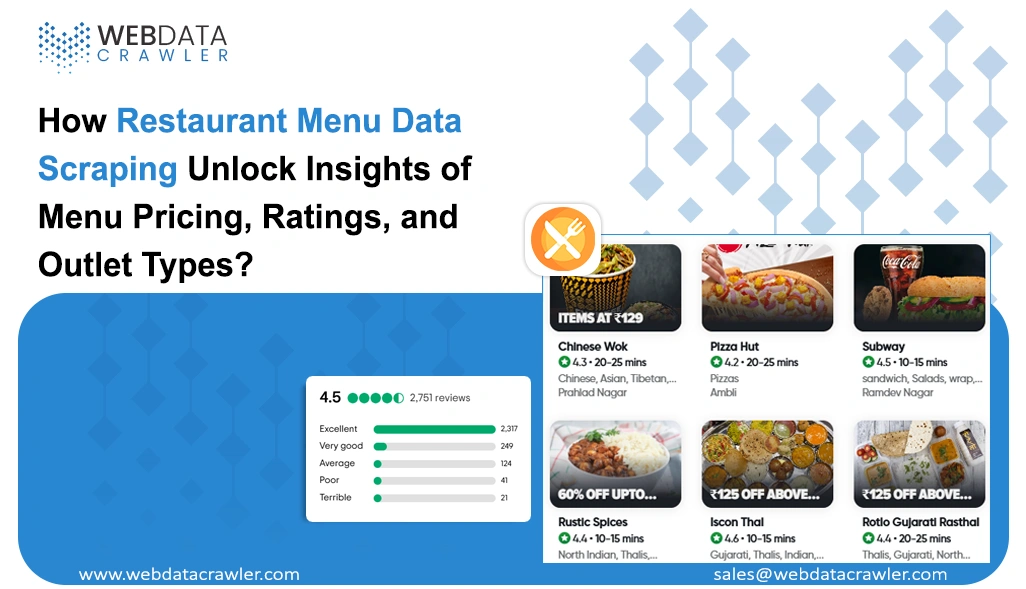
Introduction
In the highly competitive restaurant industry, understanding how pricing, customer reviews, and outlet performance shape the business landscape is crucial for success. One of the most effective ways to gain this insight is through restaurant menu data scraping. By extracting real-time data from various sources, businesses can uncover trends in menu pricing, evaluate customer satisfaction through ratings, and analyze the performance of different outlet types.
Here’s a deeper dive into how restaurant menu data scraping can unlock valuable insights and help restaurants optimize their strategies.
The Power of Menu Pricing Data
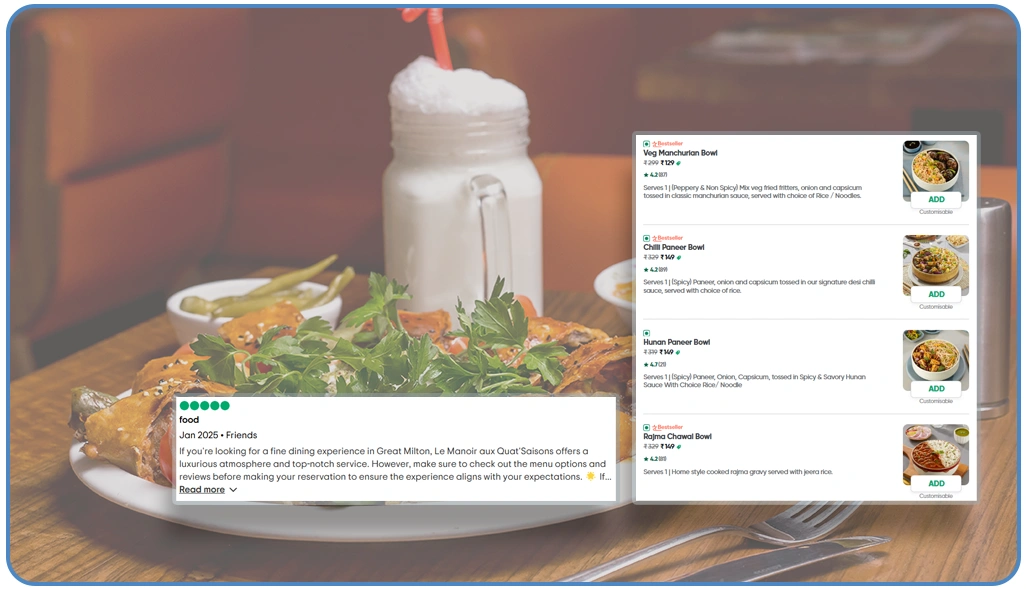
Effective pricing is critical in the restaurant industry. Web Scraping Services for menu pricing can provide restaurants with valuable information on how competitors price their dishes. By gathering data on menu items and prices from multiple restaurants, businesses can:
- Adjust pricing strategies: Understand how competitors price similar items and adjust your own pricing accordingly to remain competitive.
- Identify trends: Detect seasonal pricing trends or pricing changes in response to economic factors.
- Optimize menu: Identify which dishes are overpriced or underpriced compared to the market.
For example, a fast-food chain could use menu pricing data extraction to track how competitors offer discounts during holiday seasons or special promotions. By scraping the menu prices of similar outlets in the area, the chain can adjust its pricing strategy to capture customer interest during these periods.
Scraping Ratings and Pricing for Better Customer Insights
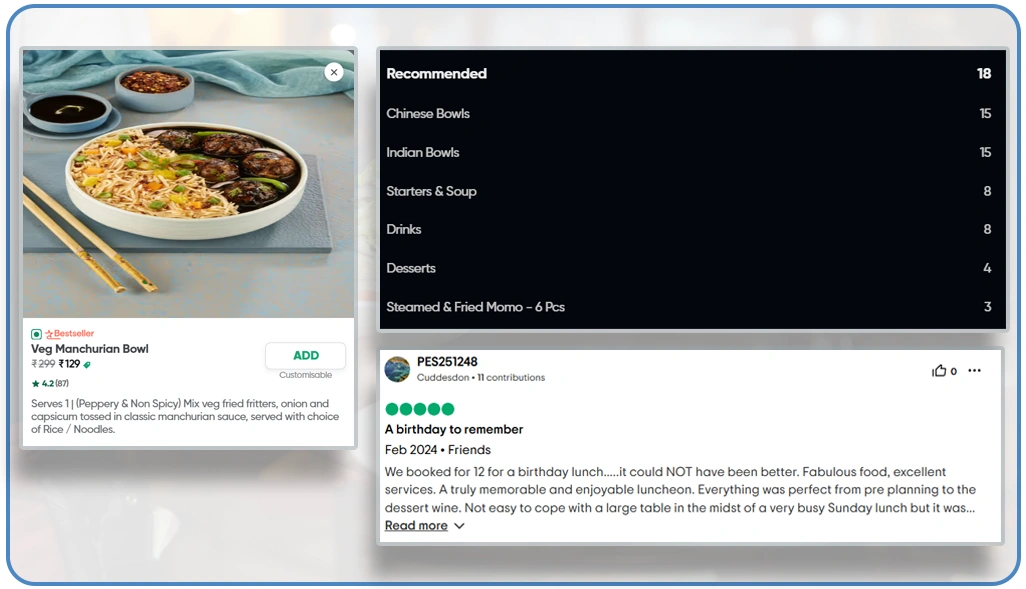
Customer reviews are a goldmine of information. Scraping ratings and menu pricing not only gives an overview of how dishes are priced but also how customers perceive the value of those items. Data extraction from review sites can reveal the correlation between pricing and customer satisfaction.
For instance, a high-priced dish that receives low ratings can signal to the restaurant that the dish might not offer good value, prompting a price adjustment or recipe change. Conversely, a moderately priced dish with high ratings might indicate a strong value proposition that could be expanded to other outlets.
Real-World Example: A chain of Italian restaurants can scrape customer reviews and menu prices to find out if their signature pasta dishes are priced too high compared to similar offerings at competitor establishments. If customers consistently mention the price as being too high, the chain might adjust its pricing or introduce special offers to enhance customer satisfaction.
Understanding Outlet Types and Pricing Insights
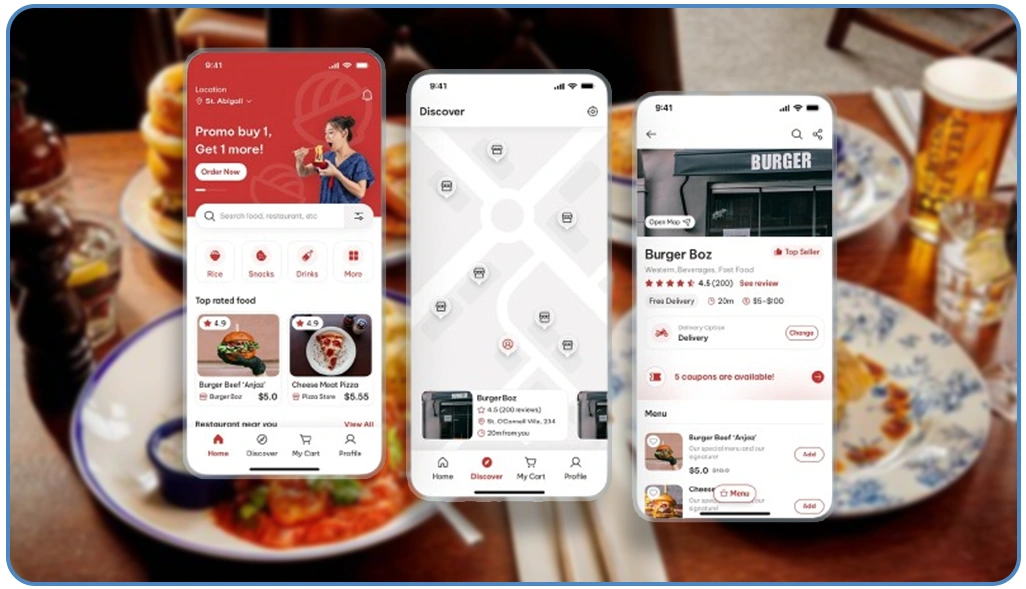
Different types of outlets—whether fast food, casual dining, or fine dining—adopt different pricing strategies. Scraping outlet types and pricing insights allows restaurants to track how competitors in the same category price their menu items. This helps businesses:
- Tailor pricing: Fine dining establishments may charge premium prices, while fast food outlets could focus on competitive pricing to attract budget-conscious customers.
- Monitor regional variations: Prices may vary based on location, so scraping data from different regions can help understand how much to charge in different areas.
- Analyze customer behavior: By observing how different outlet types are priced, restaurants can determine which types of outlets are more successful in particular regions.
For example, fast-casual restaurants may notice that their competitors in upscale urban areas charge more for similar meals, while casual dining outlets in suburban areas tend to keep prices lower. Scraping outlet types and pricing insights can help balance pricing to align with local market expectations.
Real-World Use Cases of Restaurant Menu Data Scraping
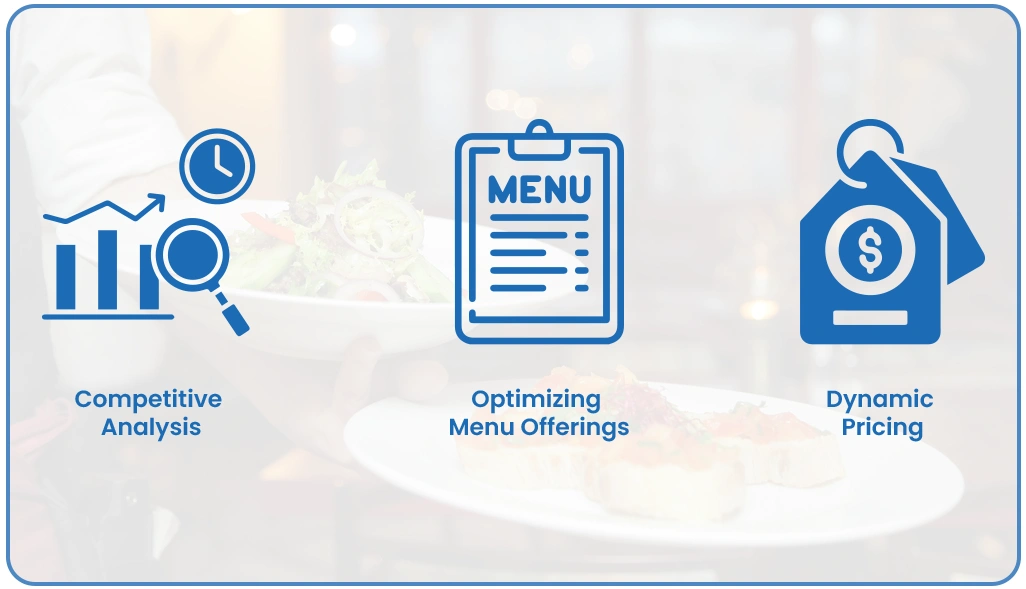
Here are some real-world use cases where restaurant menu data scraping has proven valuable:
- Competitive Analysis: A food delivery service collects data from various restaurant menus across multiple locations to monitor pricing trends and adjust its own pricing strategies accordingly. This helps the service remain competitive by offering prices that are in line with current market standards.
- Optimizing Menu Offerings: A restaurant chain scrapes menu data from several outlets to analyze which dishes are most popular and which have the lowest ratings. With this information, they can optimize their menu by removing underperforming dishes and introducing popular alternatives.
- Dynamic Pricing: A fine dining restaurant uses menu pricing data extraction to track competitor pricing and adjust its menu prices dynamically based on demand, holidays, or special events. By continuously monitoring how competitors price their offerings, the restaurant can make real-time adjustments to maximize revenue.
Stats and Industry Insights
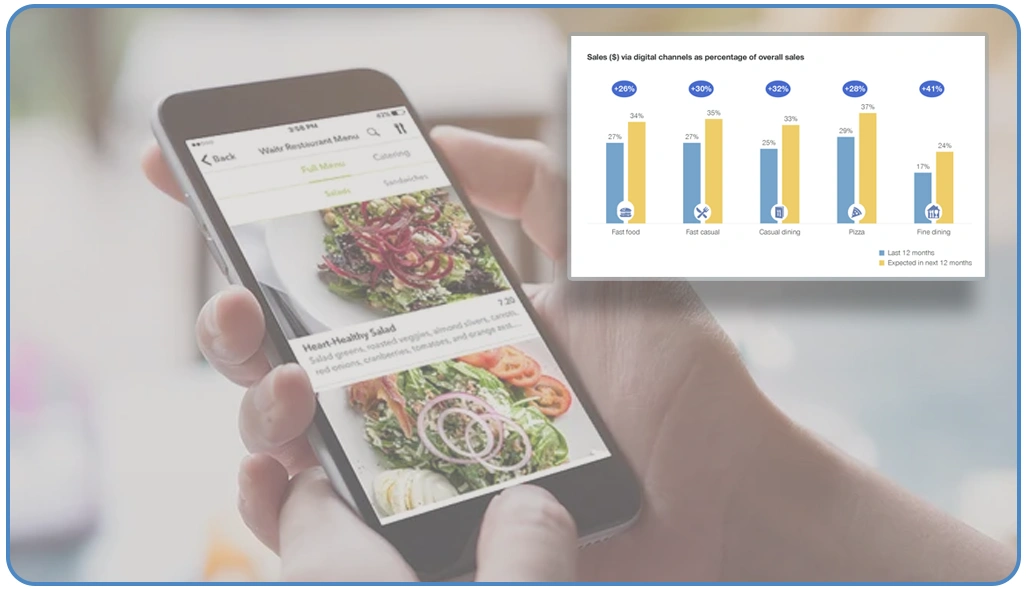
- Menu Pricing: According to a 2025 report by Technomic, 73% of consumers say they are influenced by the price of a dish when deciding what to order. This highlights the importance of menu pricing data extraction in shaping customer decisions.
- Customer Reviews: A survey from BrightLocal found that 87% of consumers read online reviews for local businesses. By scraping restaurant ratings and reviews, businesses can gain invaluable feedback on customer preferences and satisfaction.
- Outlet Performance: A study by the National Restaurant Association revealed that 60% of restaurant customers decide on a venue based on online reviews, making outlet-level business intelligence scraping a crucial tool for improving customer experience and driving sales.
Scraping for Business Intelligence
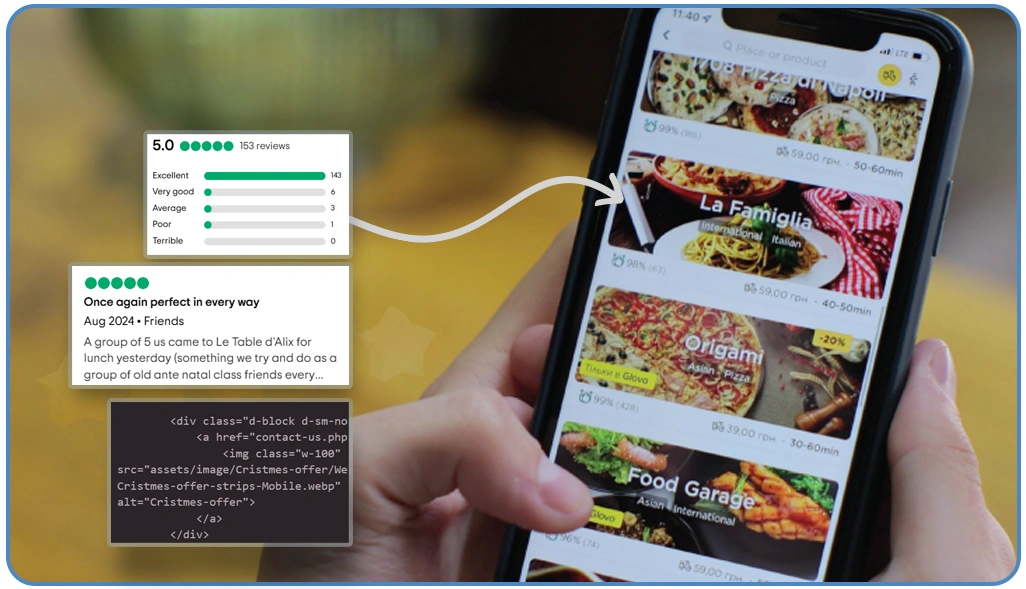
The insights derived from outlet-level business intelligence scraping can help restaurants in various ways, from improving customer service to optimizing operations. By focusing on data specific to individual restaurant outlets, businesses can:
- Track how each outlet is performing based on customer feedback and pricing strategies.
- Compare performance across different regions to identify where certain menu items or outlets are more popular.
- Make data-driven decisions on where to open new outlets or which ones need improvement.
For instance, a restaurant chain might scrape reviews and pricing data from each of its outlets to evaluate which location is underperforming. The data might reveal that a particular outlet’s pricing is too high for the target market or that the menu needs adjustment.
Conclusion
In the competitive world of the restaurant industry, restaurant menu data scraping offers valuable insights into menu pricing, ratings, and outlet types. By leveraging scraping ratings and menu pricing, outlet-level data scraping, and scraping restaurant outlet data, businesses can make informed decisions that optimize pricing, improve customer satisfaction, and drive profitability.
If you’re looking to unlock these insights and gain a competitive edge in the industry, Web Data Crawler is here to help. We specialize in providing comprehensive scraping services tailored to your business needs. Contact us today to learn how we can assist you in harnessing the power of restaurant menu data scraping and more!